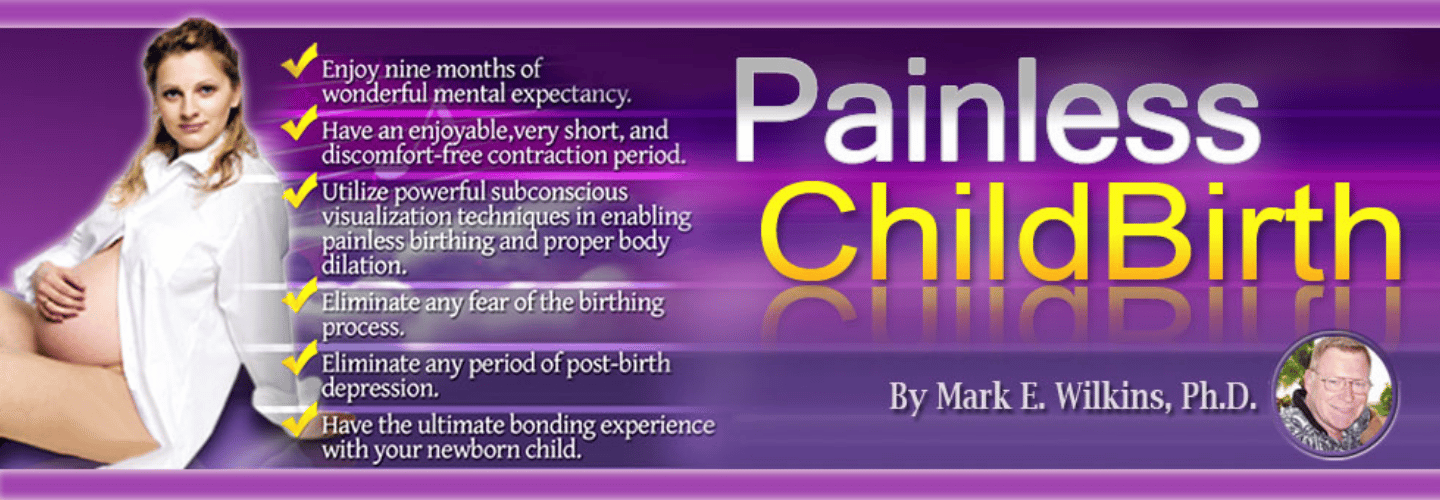
In the domain of childbirth, the quest for effective pain management and emotional well-being during labor has led many to explore the sphere of hypnobirthing techniques. But what are the best methods to truly harness the power of the mind during this transformative experience? Imagine a journey where visualization, deep breathing, positive affirmations, and self-hypnosis intertwine to create a tapestry of calm and empowerment amidst the intensity of childbirth. Stay tuned as we uncover the secrets behind the most potent hypnobirthing techniques that could redefine your birthing experience.
Benefits of Hypnobirthing Techniques
Hypnobirthing techniques offer expectant parents a valuable tool to enhance their birthing experience by reducing fear and pain while promoting relaxation and positivity. One of the key benefits of hypnobirthing is its ability to provide effective pain relief during labor. By incorporating techniques such as self-hypnosis, deep relaxation, and visualization, individuals can better manage the intensity of contractions and discomfort, leading to a more comfortable and empowering birthing process.
Additionally, hypnobirthing empowers birthing individuals by offering them coping mechanisms to navigate the challenges of labor with confidence and control. This sense of empowerment plays an essential role in fostering a positive birth experience, as it enables parents to approach childbirth with a mindset of strength and resilience. Research suggests that individuals who practice hypnobirthing techniques report higher satisfaction rates with their birthing experience, highlighting the significant impact these methods can have on overall well-being and emotional fulfillment during labor.
Visualization for Pain Management
Visualization is a powerful tool in hypnobirthing, enabling women to mentally prepare for a calm and positive birth experience. By creating mental images of a smooth labor process, expectant mothers can reduce fear and anxiety, ultimately enhancing relaxation and confidence during childbirth.
Guided relaxation techniques through visualization can help women focus on positive outcomes, release tension, and maintain a sense of calmness throughout labor.
Mental Imagery Benefits
The power of mental imagery lies in its ability to transform the perception of pain during labor, offering a unique approach to managing sensations with positivity and control. By utilizing visualization techniques, expectant mothers can picture a smooth and comfortable birth, reimagining pain as pressure or energy rather than discomfort.
Research indicates that incorporating mental imagery in hypnobirthing can markedly reduce the perception of pain during childbirth. This practice helps the mind focus on positive outcomes, fostering relaxation and diminishing fear and anxiety.
Through the power of mental imagery, women can develop a calm and controlled mindset, enhancing their ability to cope with labor sensations effectively. This technique proves invaluable in promoting a more positive birthing experience.
Guided Relaxation Techniques
Amid the intensity of labor pains, guided relaxation techniques offer a soothing escape through vivid mental imagery of tranquil settings. These visualizations play an important role in pain management during childbirth, allowing mothers to focus on serene landscapes or calming scenarios to distract from discomfort.
Research indicates that visualizing such calm and serene places can reduce the perception of pain and promote relaxation throughout labor. By incorporating guided relaxation techniques into hypnobirthing practices, expectant mothers can harness the mind-body connection to reduce anxiety and fear, ultimately leading to a more positive birthing experience.
Embracing these techniques empowers women to navigate labor with a sense of calm and inner strength, fostering a supportive environment for both mother and baby.
Deep Breathing Exercises

When preparing for labor, mastering deep breathing exercises is an essential element in hypnobirthing to enhance relaxation and manage pain effectively.
Deep breathing techniques play a vital role in increasing oxygen flow, promoting relaxation, and reducing stress during childbirth. By engaging in slow, controlled breaths, individuals can calm both their body and mind, ultimately leading to a more comfortable birthing experience.
Research supports the benefits of deep breathing in labor, showing that it can decrease pain perception while enhancing feelings of control and calmness throughout the process.
Regular practice of deep breathing exercises equips individuals with the tools to manage contractions, stay focused, and maintain a sense of control during labor. This fundamental hypnobirthing technique aligns with the body's natural ability to cope with labor sensations, fostering a positive birth experience for both the birthing person and their baby.
Positive Affirmations in Labor
Shifting from deep breathing exercises, positive affirmations in labor serve as powerful tools to cultivate a mindset of confidence and empowerment during childbirth. These affirmations play a significant role in reducing fear, anxiety, and pain, creating a positive outlook that can enhance the birthing experience.
Research supports the idea that positive affirmations help women feel more in control, confident, and empowered during labor. Affirmations such as 'My body knows how to give birth naturally' and 'I trust my instincts' can instill a sense of calm and support during the intensity of labor.
Relaxation Techniques for Childbirth

Utilizing a combination of deep breathing, visualization, and progressive muscle relaxation, hypnobirthing relaxation techniques are designed to foster a tranquil state of mind during the labor process. These pain management techniques go beyond just helping with physical relaxation; they aim to reduce fear, tension, and anxiety—factors that can intensify the sensations of childbirth.
By incorporating deep breathing exercises, mothers can oxygenate their bodies effectively, promoting relaxation and reducing stress. Visualization techniques encourage mothers to create mental images of calm and peaceful scenarios, helping to shift their focus away from discomfort. Progressive muscle relaxation involves consciously tensing and then relaxing different muscle groups, promoting overall body relaxation.
Self-Hypnosis Practices
Inducing a deeply relaxed state conducive to receiving positive suggestions and affirmations, self-hypnosis in hypnobirthing empowers expectant mothers to manage fear, anxiety, and pain during labor effectively. By practicing self-hypnosis techniques, individuals can reduce stress levels and enhance feelings of control, fostering a positive mindset for childbirth. Learning self-hypnosis through guided sessions or classes equips mothers with the tools needed to navigate the intensity of labor confidently.
Research indicates that incorporating self-hypnosis into hypnobirthing practices can lead to various benefits. These include shorter labor durations, a decreased requirement for medical interventions, and an overall increase in satisfaction with the birthing experience. By focusing on positive thoughts and visualizations, pregnant individuals can harness the power of their minds to promote a smoother labor process. Embracing self-hypnosis as part of hypnobirthing can be transformative, empowering mothers to approach childbirth with calmness and resilience.
Mindfulness Techniques for Labor

Discover how mindfulness techniques can reveal your labor experience by mastering the art of breathing.
Harness the power of visualization for pain relief.
Cultivate a positive mindset through affirmations.
These simple yet potent practices can help you stay grounded, calm, and in control during one of the most profound moments of your life.
Get ready to unveil the secrets to a more empowered and mindful childbirth journey.
Breathing Techniques During Labor
Mindful breathing techniques play a crucial role in enhancing the birthing experience by regulating oxygen flow and promoting relaxation during labor. These HypnoBirthing techniques are not just about inhaling and exhaling; they are about connecting with your body and baby on a deeper level.
By incorporating deep breathing into your labor, you are better equipped to manage pain, stay calm during contractions, and maintain a positive mindset. The power of mindfulness in labor lies in its ability to reduce stress, increase oxygen supply to your baby, and help you navigate through each contraction with a sense of control and focus.
Embrace these breathing techniques as your allies in the beautiful journey of childbirth.
Visualization for Pain Management
Harnessing the power of visualization techniques can greatly impact pain management during labor, offering a pathway to a more serene and controlled birthing experience. By practicing visualization, individuals can effectively manage pain by creating mental images of a positive birth experience. Research indicates that this method helps reduce fear, anxiety, and perceived pain levels, fostering a more comfortable labor process.
Visualizing a tranquil birth environment, complete with soothing sights, sounds, and sensations, enables the birthing person to stay focused, relaxed, and empowered throughout childbirth. This technique allows individuals to access their subconscious mind, instilling confidence and relaxation.
Incorporating mindfulness strategies like visualization in hypnobirthing enhances the birthing journey by cultivating a positive mindset and minimizing stress levels.
Affirmations for Positive Mindset
Effective hypnobirthing techniques include utilizing affirmations to cultivate a positive mindset during labor, promoting confidence and calmness throughout the birthing process. Affirmations serve as powerful tools to reduce fear and anxiety by instilling a sense of control and empowerment. Research indicates that incorporating affirmations can greatly enhance emotional well-being and increase feelings of relaxation during labor.
Muscle Relaxation Methods

Utilizing progressive muscle relaxation techniques is a key component of hypnobirthing to alleviate tension and promote relaxation during labor. This method involves the gradual tensing and relaxation of different muscle groups in the body, leading to reduced physical stress and anxiety. Studies have indicated that engaging in progressive muscle relaxation can help lower pain perception and increase comfort during childbirth. By incorporating muscle relaxation methods into their hypnobirthing practice, individuals in labor can attain a state of calmness and better manage the sensations experienced during childbirth, contributing to a more positive and comfortable birth experience.
- Release Tension: Progressive Muscle Relaxation helps release tension in muscles.
- Promote Relaxation: It aids in promoting relaxation during labor.
- Reduce Physical Stress: By gradually tensing and relaxing muscles, physical stress is reduced.
- Lower Pain Perception: Studies show it can decrease the perception of pain during childbirth.
- Enhance Comfort: Engaging in muscle relaxation techniques enhances comfort during the birthing process.
Empowering Birth Experience
Embracing the principles of hypnobirthing can lead to a profoundly empowering birth experience for expectant individuals. By incorporating hypnobirthing techniques such as self-hypnosis, visualization, and affirmations, individuals can reduce fear, enhance their feelings of control, and promote relaxation during labor.
Studies have shown that utilizing these methods can result in a more positive and empowering birth experience. Through the power of positive mindset and creating a calm and comfortable labor environment, hypnobirthing enables individuals to manage pain perception effectively.
The focus on empowerment and self-assurance throughout the birthing process helps individuals feel more confident and in tune with their bodies. By embracing hypnobirthing techniques, individuals can cultivate a sense of empowerment, leading to a labor experience that is not only physically manageable but also emotionally uplifting.
The transformative effects of hypnobirthing can truly make a difference in how individuals perceive and approach childbirth, ultimately fostering a more empowering and positive birthing experience.
Frequently Asked Questions
What Are the Techniques of Hypnobirthing During Labour?
During labor, hypnobirthing techniques encompass:
- Deep breathing for relaxation
- Visualization to foster focus
- Positive affirmations for empowerment
- Self-hypnosis to manage pain
Incorporating guided imagery, mindfulness, and enhancing the mind-body connection can aid in maintaining a calm and present state during childbirth. Labor support is essential to reinforce these techniques for a positive birthing experience.
How to Hypnotize Yourself for Labor?
Hypnotizing yourself for labor involves deep breathing, positive affirmations, visualization techniques, and relaxation exercises. It also includes self-hypnosis tips, mind-body connection, focus, concentration, and a calm mindset. By tapping into your inner resources, you can promote a smoother birthing experience.
Engaging in these techniques can help reduce fear and anxiety, manage pain effectively, and stay present during childbirth. Practice these methods to create a calm and controlled mindset for a more comfortable labor experience.
What Is the Best Position for Hypnobirthing?
When considering the best position for hypnobirthing, it is essential to prioritize comfort, relaxation, and ideal blood flow. Standing, squatting, side-lying, reclining, kneeling, sitting, leaning, and swaying are commonly recommended positions. These positions support the body's natural birthing instincts and help promote relaxation and control during labor.
Experimenting with different positions to find what enhances relaxation, focus, and comfort is key to successful hypnobirthing practice.
What Are the Disadvantages of Hypnobirthing?
When exploring the disadvantages of hypnobirthing, it is essential to acknowledge that while it offers pain management benefits, it may not eliminate pain entirely.
Some individuals find it challenging to maintain control during labor, leading to unrealistic expectations. Additionally, hypnobirthing's effectiveness varies among individuals, and participation in costly programs may hinder accessibility.
Cultural stigmas, incompatibility with medical interventions, and individual variations further impact the overall experience.
Conclusion
To sum up, integrating hypnobirthing techniques during labor can significantly benefit expecting mothers by reducing fear, anxiety, and pain while promoting relaxation and empowerment.
By incorporating visualization, breathing exercises, positive affirmations, relaxation methods, self-hypnosis practices, mindfulness techniques, and muscle relaxation methods, mothers can have a more positive and empowering birth experience.
While some may be skeptical of the effectiveness of hypnobirthing, the evidence supporting these techniques' benefits is compelling and worth considering.





